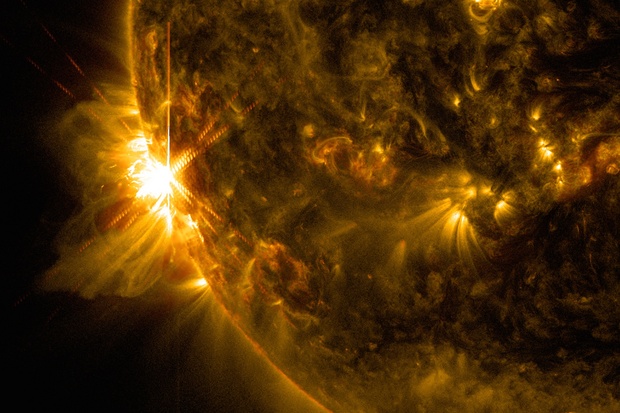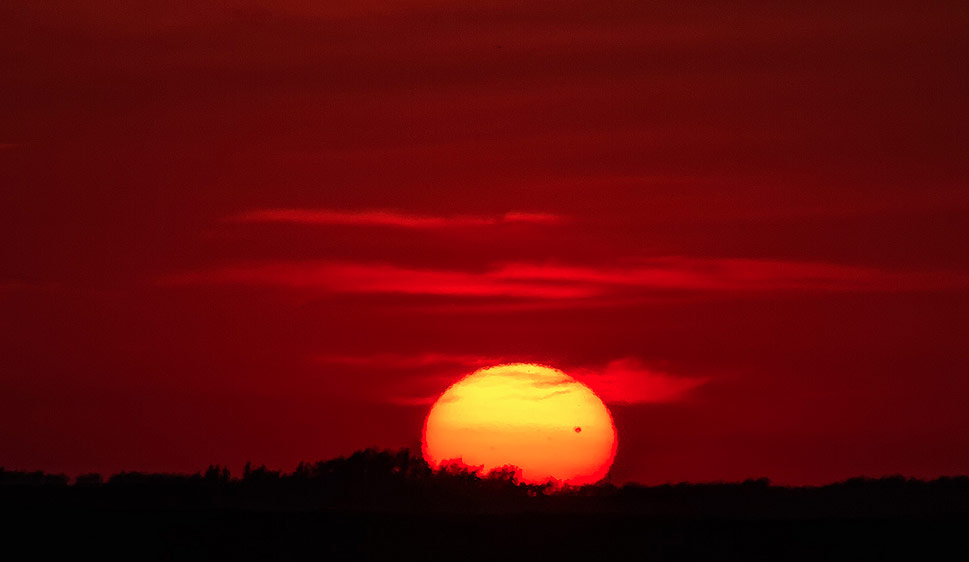Sun Unleashes 2 Major Solar Flares Back-to-Back (Video)
The sun unleashed two major solar flares early Tuesday (June 10) in amazing back-to-back storms from our nearest star.
The first flare, a powerful X2.2-class solar flare, hit its maximum at about 7:42 a.m. EDT (1142 GMT). The second powerful X1.5-class flare, followed quickly behind, blasting out from the sun at 8:36 a.m. EDT (1236 GMT). Both flares could cause radio communication blackouts on Earth for about an hour, according to an alert from the U.S. Space Weather Prediction Center in Boulder, Colorado. NASA's sun-observing Solar Dynamics Observatory captured a video of the flares from space.
"Solar flares are powerful bursts of radiation," Karen Fox, of NASA's Goddard Space Flight Center said in a statement. "Harmful radiation from a flare cannot pass through Earth's atmosphere to physically affect humans on the ground. However, when intense enough, they can disturb the atmosphere in the layer where GPS and communications signals travel." [The Biggest Solar Flares of 2014 (Photos)]

Officials with the prediction center do not think there will be a coronal mass ejection — a burst of plasma sent out from the sun — associated with the first flare, but they will continue to analyze the data they collected on the flares.
"Area of impact consists of large portions of the sunlit side of Earth, strongest at the sub-solar point," SWPC officials wrote in an alert about the X2.2 flare. Both flares emanated from the sun's Region 2087, close to the southeastern limb of the solar disk.
X-class flares are the most powerful kinds of solar flares produced by the sun. The star also produces M-class flares that can produce amazing aurora shows in the northern latitudes, and it can also erupt with weaker, C-class flares.
The sizzling star at the center of our solar system makes life possible. But how much do you know about our sun?
Sign up for the Live Science daily newsletter now
Get the world’s most fascinating discoveries delivered straight to your inbox.
Fun in the Sun: Test Your Solar Smarts

NASA's Solar Dynamics Observatory and other probes like the agency's twin STEREO probes and joint U.S.-European SOHO spacecraft keep close tabs on the sun from space. When aimed at Earth, the powerful solar flares can cause problems with the planet's power grids and even endanger astronauts and satellites in space.
Follow Miriam Kramer @mirikramer and Google+. Follow us @Spacedotcom, Facebook and Google+. Original article on Space.com.












